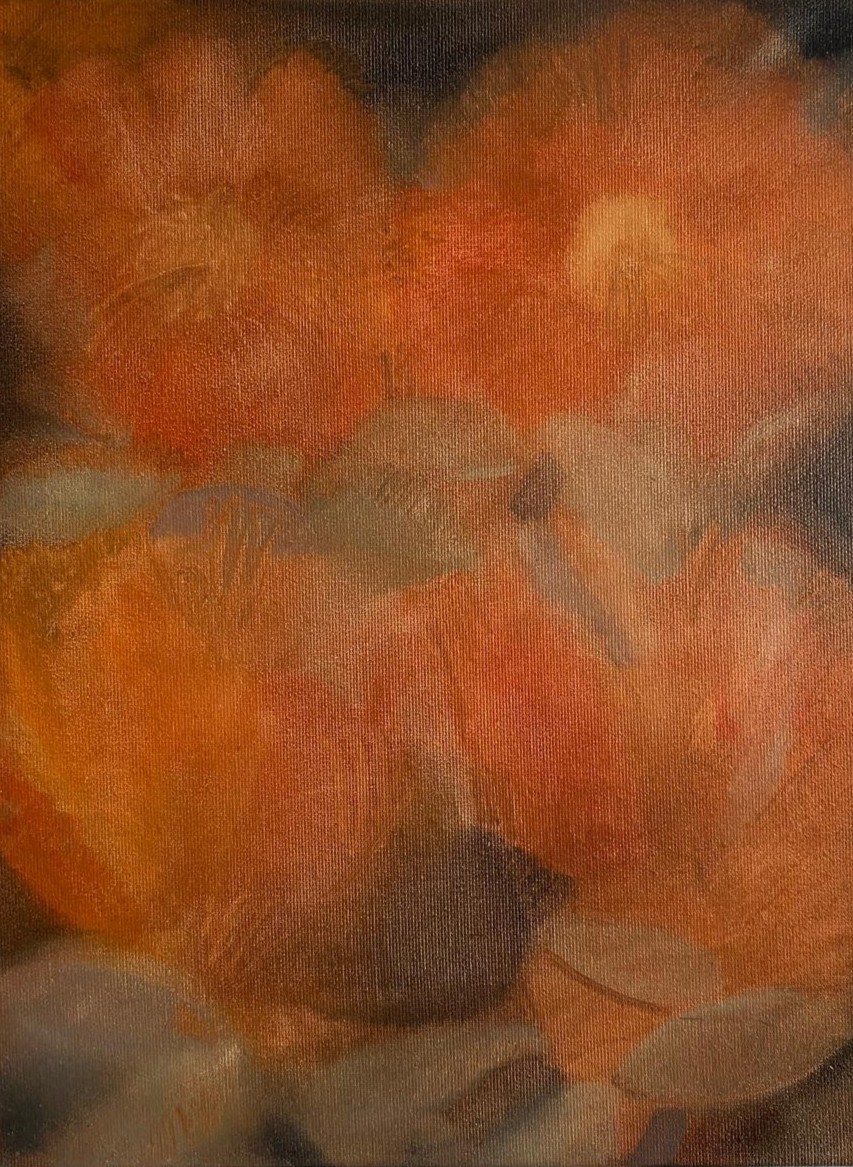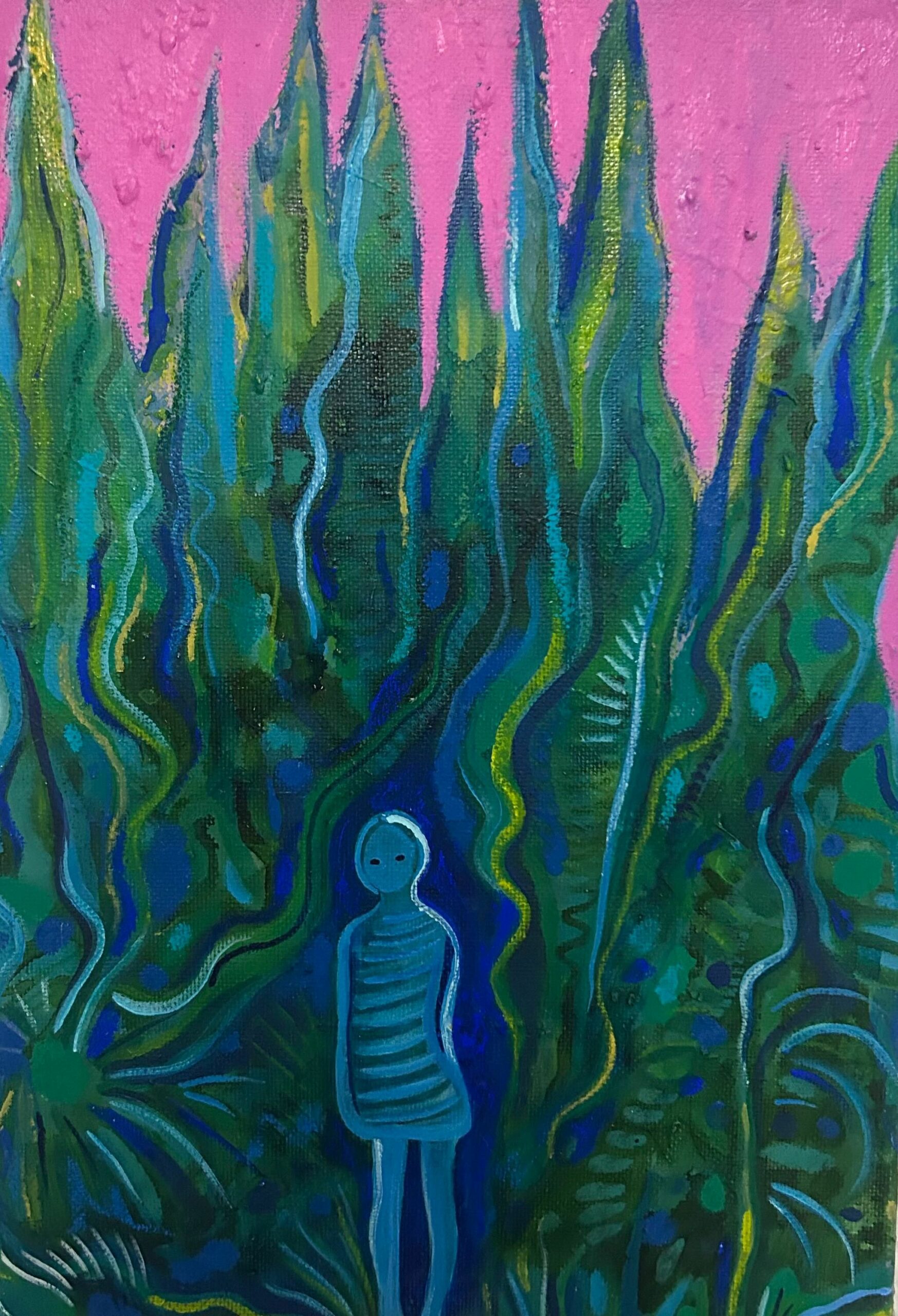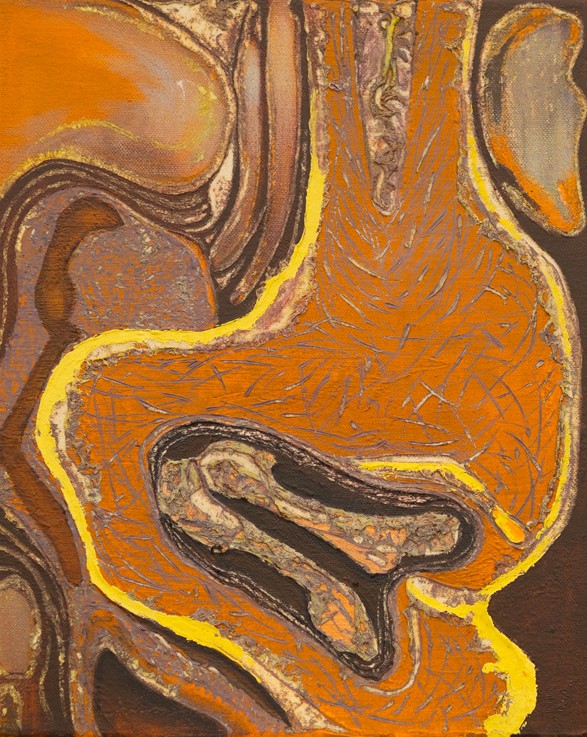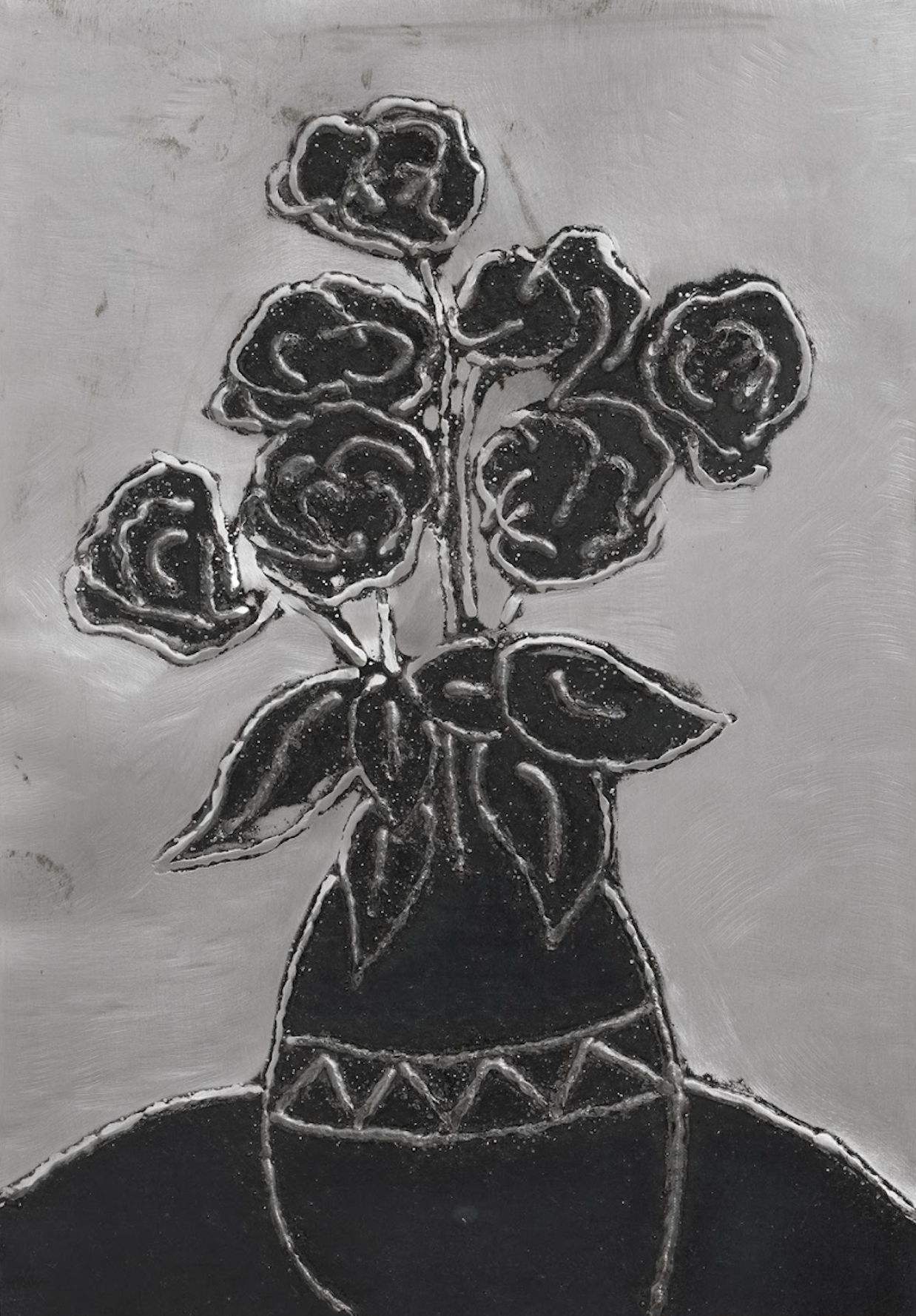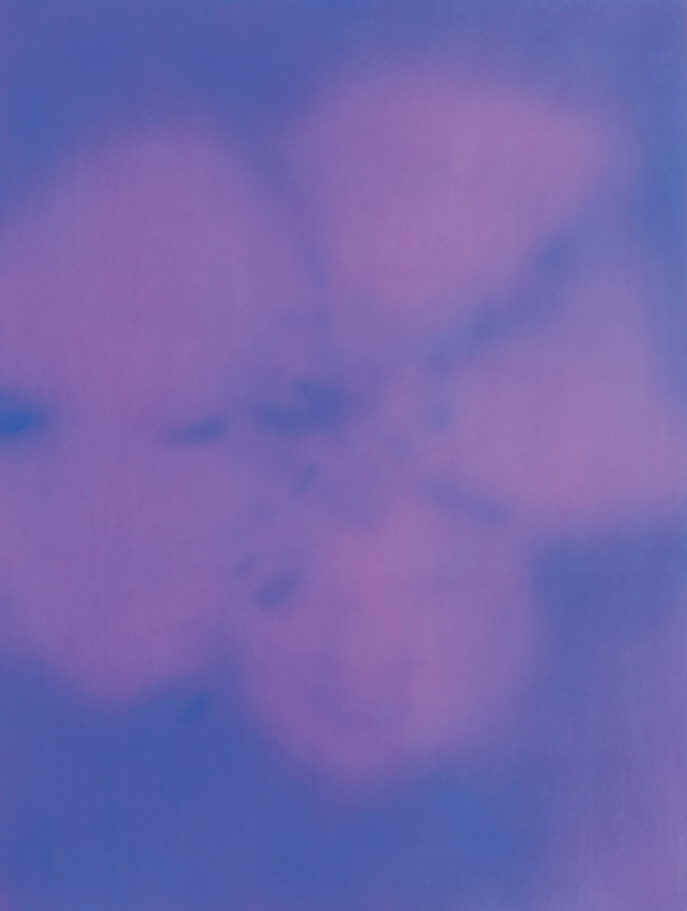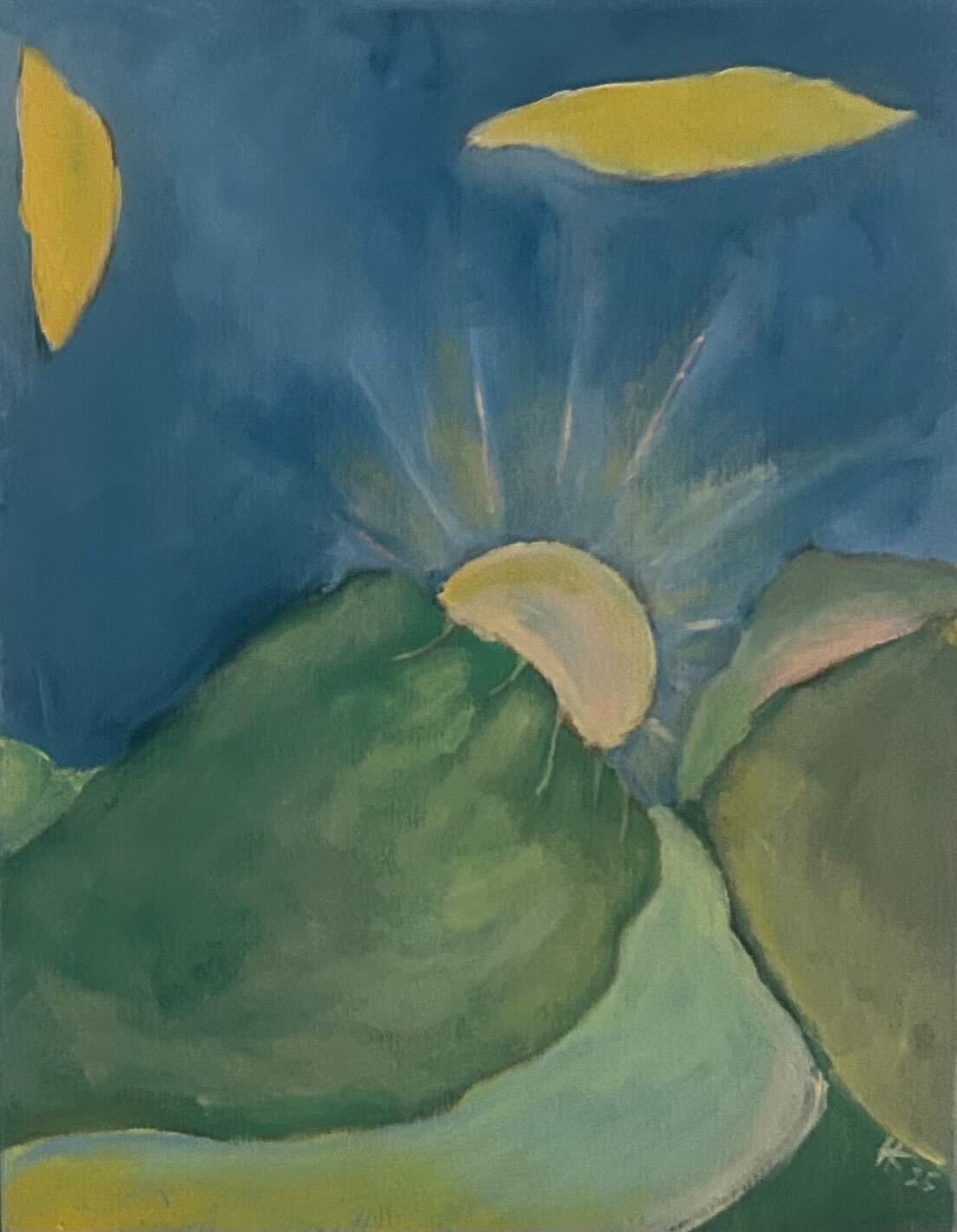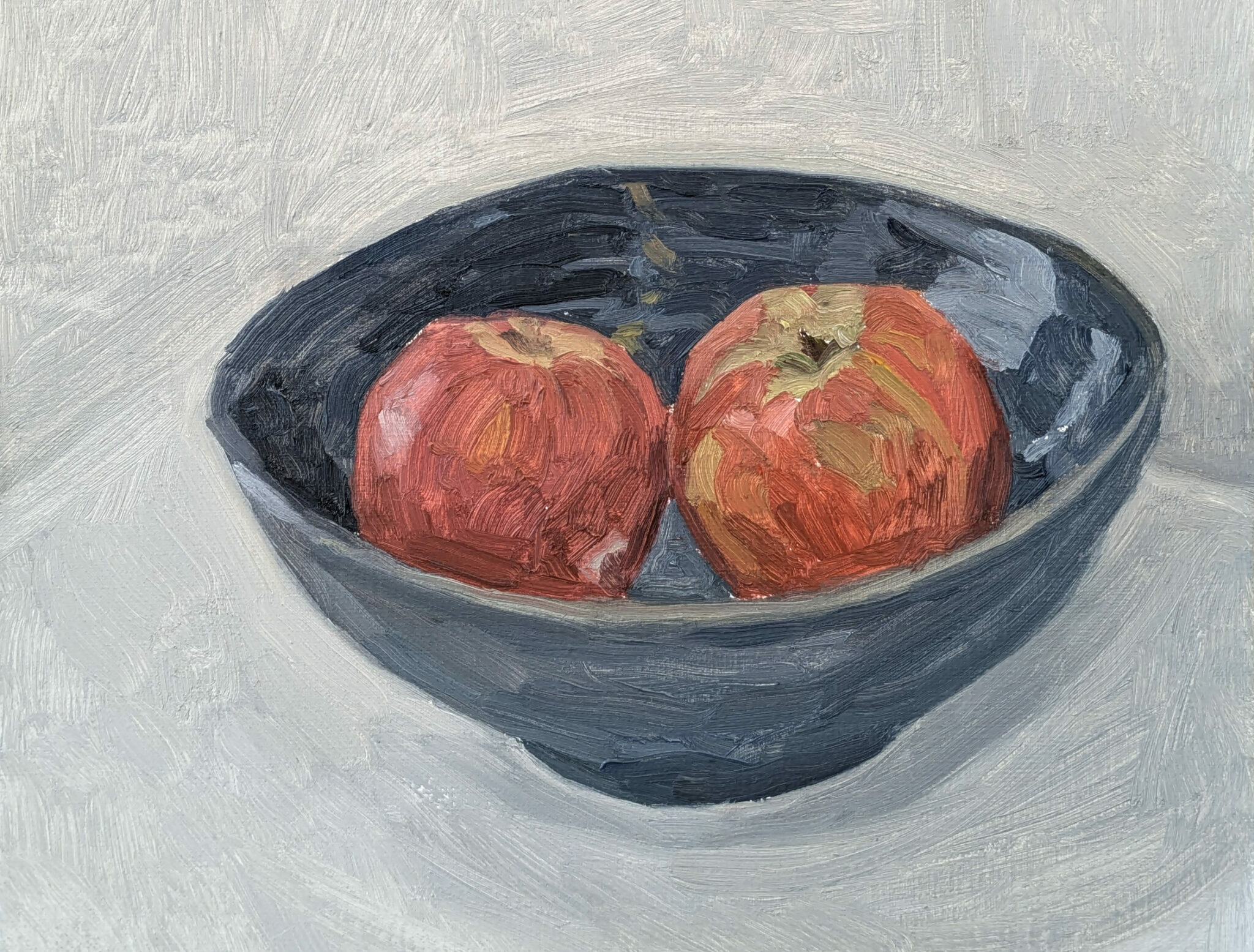The exhibition "Harmonié et Désir" brings together in the ethereal space of pal project the works of Curtis Kulig, Aristide Maillol and Yves Scherer, and gently evokes a fascination for the mechanics of the body, the desire to be loved, to the beloved. On the fluffy white floor of the gallery, Yves Scherer's voluptuous figures stand alongside Maillol's masterpieces, a century older than them. These bodies are overlaid by the tender, frozen touches of colour emanating from Curtis Kulig's paintings.
Curtis Kulig's oil paintings evoke the way the world follows its own rhythm and the challenge of being in tune with it. His large-scale still lifes present a group of different flower species that can be found in the artist's home state of North Dakota. This region, named after the indigenous Sioux tribes who were chased out of the land, has made a fortune from the wealth of natural resources - oil extraction and production in particular. Curtis' compositions combine simple flowers that are now arranged in small glass vases with other fruits and tableware. Lit by stage lights, they cast a strong shadow on the large pastel canvas plains that surround them, reinforcing their fragility. Painted in muted colours, these flowers exude a certain nostalgia and emotion. Captured on the canvas, their slow death is stopped at that precise moment forever, an allusion to the life and movement that emanates from things, even inanimate ones. In another series, the relationship to the text, almost tragic ( Death doesn't want me; I'm Near you now; Love me ) offers the artist a theatrical, passionate and intimate breath: a poetic incarnation that tends towards universality.
A pioneering artist of modern sculpture in the 20th century, Artiste Maillol, through unity, totality and synthesis, understood what sculpture had to express at the beginning of the last century: the majesty of matter and the immortal splendour of form. Almost exclusively creating female nudes with rounded forms and intense musculature, his work gives priority to a harmonious relationship between curve, volume and surface. Her dense, smooth sculptures are deliberately reminiscent of the block from which they are carved. The standing or seated figures with their neutral or interiorised expression do not completely renounce the content, but weave new relationships with it. His relationship with the model, however intimate and necessary, evacuates any quest to imitate nature: his wife Clotilde, his entourage, and then Dina Vierny, with whom he had a paternal bond, were the muses whose beauty the artist captured on free leaves. Then came the synthesis, which required a distance from the model. Drawing, on the spot, then from memory, and modelling, again with and without the model, help him to keep the inspiration for the simplicity of the forms, to express a sensuality that is born as much from the love the artist feels for the female body as from the material, clay, which he models with delight.
In a revisited romanticism flirting with a dreamlike world, Yves Scherer uses sculpture, painting, video, photography and writing to create real and fictitious characters that are both familiar and unknown. By duplicating the muses of our time, Hollywood celebrities and other media-driven protagonists in moments of vulnerability and love, Yves Scherer's work crystallises the fantasies of identity through paparazzi culture. Here, Emma (Watson) is explored as an otherness, and associates the desire created by social media with the seductive void separating image from reality. Emma Watson, known for her character in the Harry Potter fantasy film series, is also a political activist with a strong commitment to women's rights. Largely objectified by internet culture, the actress is a symbol of digital affectivity and new subjective identifications. By combining 3D printing with classical casting processes, Yves Scherer uses Emma's celebrity and the circulation of her image to blend fictional intimacy with personal emotions. The artist also superimposes his own self-portrait on that of the actress. In an observation on femininity and masculinity that goes beyond gender, Yves examines the result of the collision between two parallel worlds: what we present as our lives (for example, on social media) and what our lives actually look like. The fluctuating demarcation between reality and fantasy thus envisages new forms of identity confrontation. By ultimately constructing a myth rather than a real presence, Yves Scherer composes an iconography of absence in the digital age.
Léo Fourdrinier
"HARMONIE ET DÉSIR"
